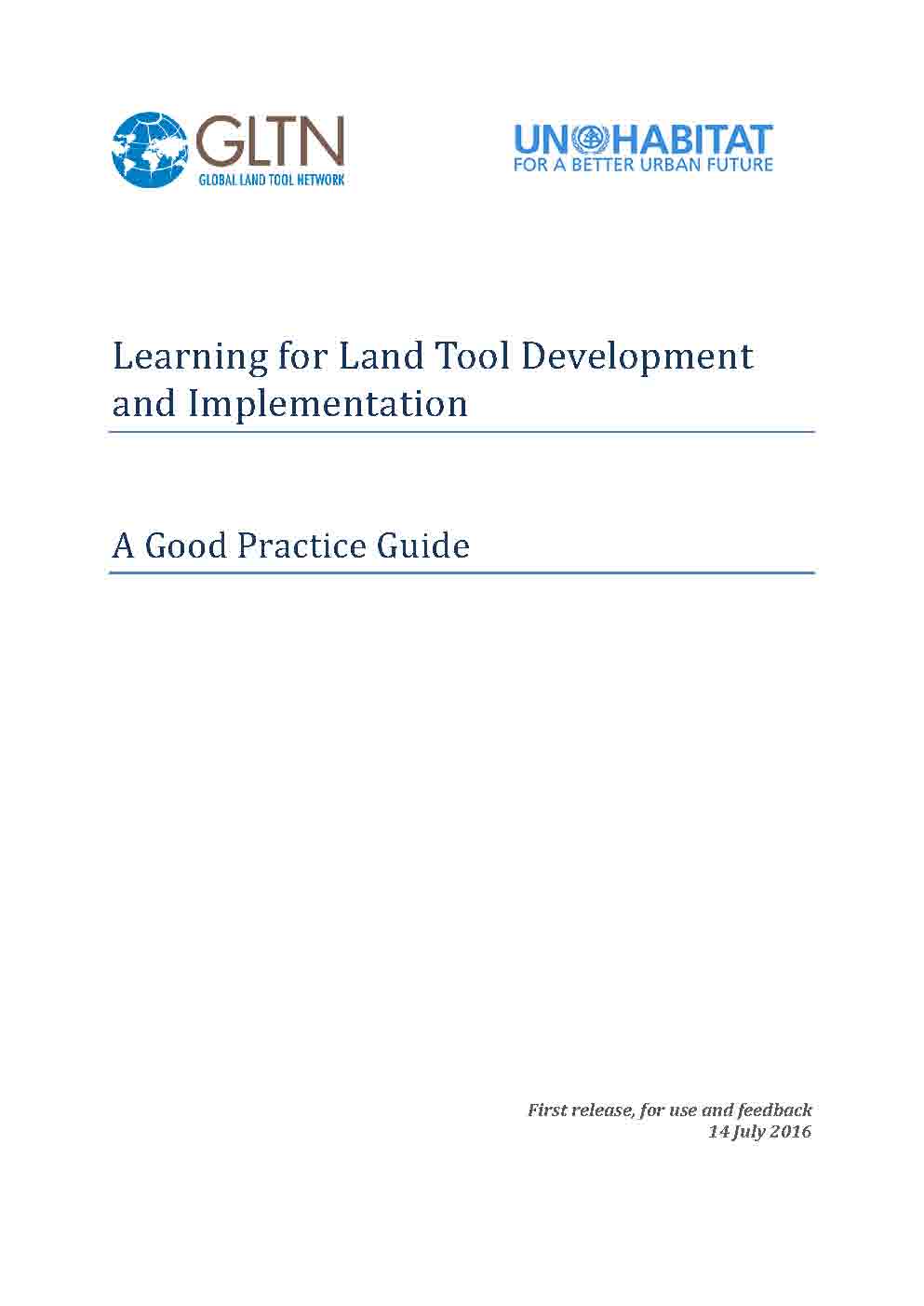Learning for Land Tool Development and Implementation. A Good Practice Guide.
This Guide has been developed for use by our colleagues and partners in implementing the GLTN capacity development strategy at country level. It is based on practical experience gained in the course our work during GLTN Phase 2, specifically in the development and application of pro-poor, gender responsive land tools. In our experience, learning is a fundamental precondition for the successful innovations that are so urgently needed to achieve responsible land administration for secure land and property rights for all.



